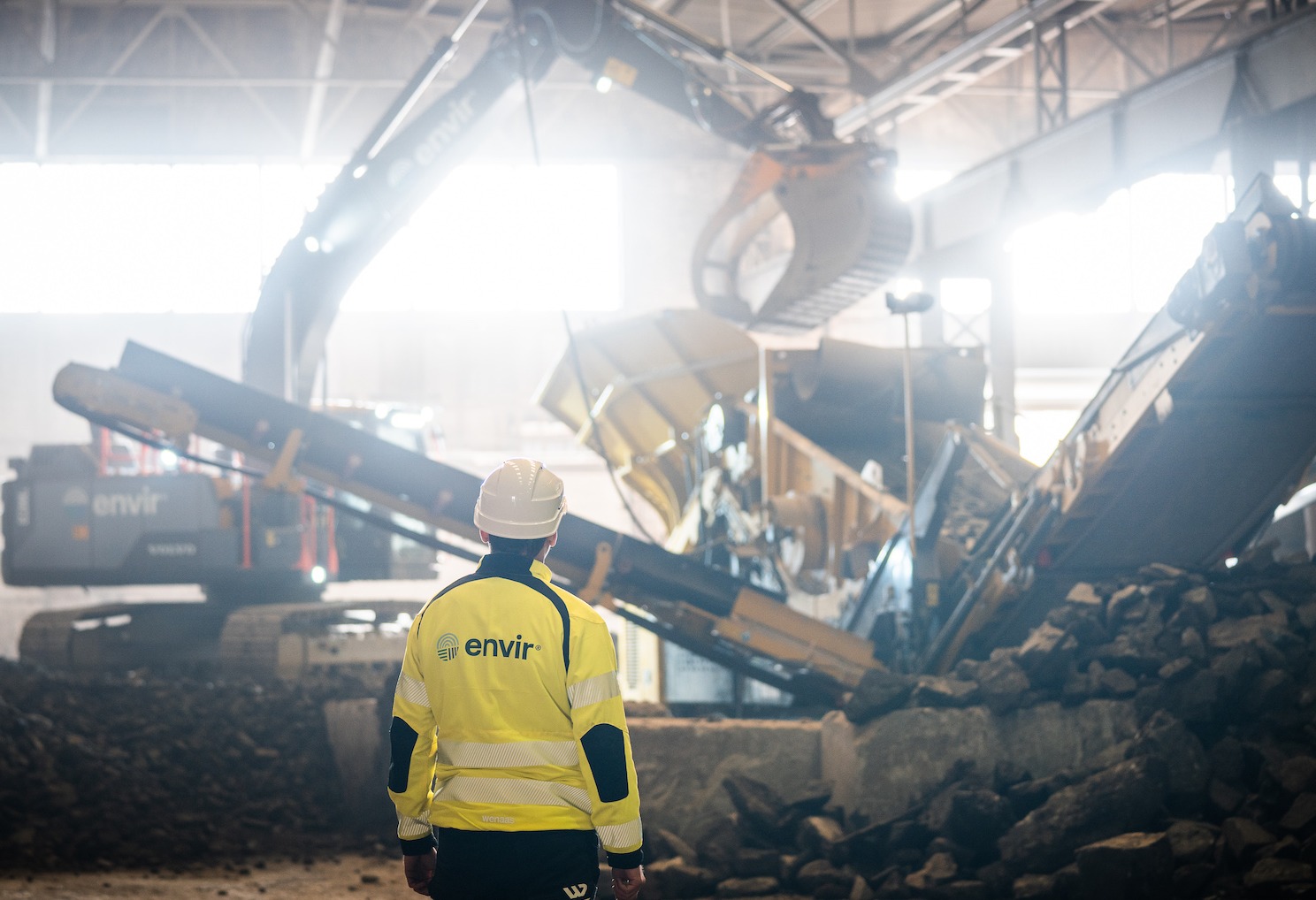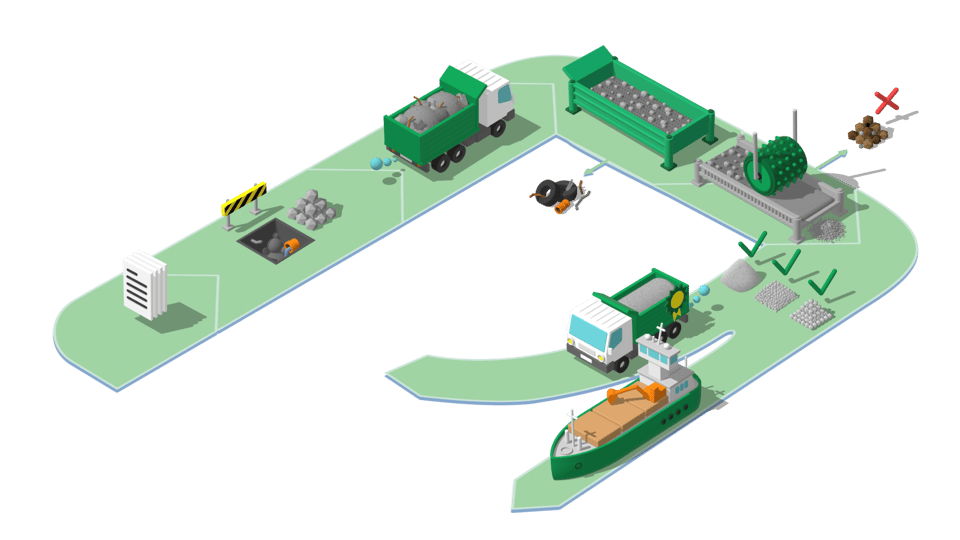
MASS HANDLING - domestic
Do you need to excavate on your own land, and suspect that the soil is polluted?
Delivery and disposal of contaminated masses in Bergen
Constructing a new building, laying a new road or landscaping a large area are all examples of work for which you need to apply for a permit in accordance with Section 20-1 of the Planning and Building Act. Before starting any civil engineering work, you need a start-up permit from the local authority.
If you suspect that the construction site is contaminated, you must arrange an assessment of the soil which you want to excavate. Samples will be taken which are analysed for environmental toxins.
If the analyses show that the samples are contaminated, you must draw up an action plan on how you will handle any surplus material which cannot be used on the property. This must be in place before the local authority can grant a start-up permit. You can deliver such surplus masses to us at Envir in Laksevåg, Bergen.
Click here for the delivery of contaminated masses for the commercial market >
What is contaminated mass?
Contaminated masses can be mass from civil engineering work, such as soil and ground or stone and concrete, which contains contaminants, but which is still under the limit for hazardous waste. Chapter 2 of the Pollution Regulations define what constitutes contaminated ground. The general rule is that ground where the concentration of material which is harmful to health or the environment exceeds the normal values in Appendix 1 to Chapter 2 of the Pollution Regulations, shall be regarded as contaminated.
Why must contaminated mass be delivered for landfill?
Contaminated ground is often found in urban areas or land that used to be industrial.
It is no longer the case that you can deliver contaminated materials to any location. You are not allowed to tip such material down a roadside slope or deliver it to a tip which receives contaminated material.
This is why you have to deliver such masses to a reception facility that has a permit to receive contaminated material.
How can I deliver contaminated masses in Bergen?
Envir AS has a permit to receive contaminated mass at our facility in central Bergen, Sjøkrigsskoleveien 15, on the outskirts of Laksevågneset.
As an individual, you can either contact us in advance with any questions you may have, or you can come direct to us – without signing a contract – for the removal of masses in Bergen.
We receive any kind of contaminated material, so all you need to know in advance is the approximate volume, and what type of place the mass is removed from – e.g. a garden or industrial area.
To calculate the volume of the material, we weigh the trailer or lorry containing the material, deducting the net weight registered on the vehicle registration certificate.
How much does it cost to deliver contaminated material to Envir?
For individuals, the price for delivering contaminated material is NOK 495 per tonne (incl. VAT).
Explanation of our simple four step service for domestic customers:
STEP 1: First drive to our head office at Laksevågneset for documentation and a job number, and then on to our reception facility which is nearby.
|
Can I get stone and gravel back afterwards?
Yes! When the material arrives at our facility in Simonsviken in Laksevåg, we separate large stones and gravel from the fine material – i.e. crushed rock, sand and soil.
Stone and gravel are clean and can be reused on projects where material is needed for backfill and landscaping work. You can buy this material to take away with you, which is particularly handy, since you have already brought a load here in your vehicle.
How is reusing stone an environmentally friendly solution?
Soil and stone are not renewable resources. Extracting new stone from stone quarries and creating landfill sites for the disposal of unusable materials results in the large-scale destruction of the natural environment. By separating fully usable stone for reuse from the contaminated material, we reduce the need to encroach on natural land, which means that together we can achieve the UN’s Sustainable Development Goals.
Why deliver contaminated mass to Envir?
Envir AS is a future-oriented waste management facility at Laksevåg in Bergen, and our goal is to look after resources through safe, environmentally friendly and circular materials management.
When you deliver contaminated masses to us at Envir, we take on the responsibility of classifying the waste before we sign an agreement, we draw up an action plan on how to treat the contaminated soil, and we weigh the material.
We sift out large stones and crushed rock, while we store gravel, sand and soil before sending it by ship to Denmark, where it will be used in a land reclamation project.
You can see an illustration of our materials management process below, and the process is this simple:
